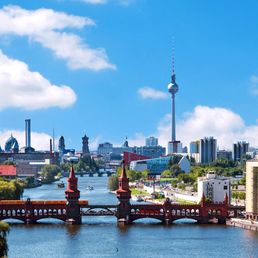Berlin's Checkpoint Charlie, symbol of a bygone era!

All our flats in Berlin
After the Second World War in 1945 and the collapse of Nazism, Berlin, like the rest of Germany, was divided into two blocs. The East of the country under Soviet control became the GDR. The West, occupied by the Western Allies, became the FRG. Checkpoint Charlie was one of the three checkpoints (along with Alpha and Bravo) that governed the passage of Allied forces through East German territory towards the centre of Berlin.
More precisely, Checkpoint Charlie was to materialise the separation between West and East Berlin, at the intersection of Zimmerstrasse and Friedrichstrasse. Initially conceived as a regulation point allowing the free movement of Allied forces in Soviet territory, Checkpoint Charlie became the most famous urban border crossing in the world after the construction of the Berlin Wall in August 1961. On 25 October 1961, it became the scene of a major international crisis between the two nuclear superpowers. After the refusal of the GDR border guards to let representatives of the allied forces enter East Berlin freely, 16 hours of direct confrontation between American and Soviet tanks took place, leaving the whole world fearing the threat of a new war. If President Kennedy's diplomacy fortunately allowed the worst to be avoided, Checkpoint Charlie would become a true symbol of the 30 years of Cold War that would follow. It was to serve as a backdrop for a number of espionage fictions that chose this period as a backdrop (from Ian Fleming's James Bond to John Le Carré or Gérard de Villiers...). Since the fall of the Wall in 1989, the site has attracted many tourists who come to visit the Museum of the Wall and take photos of themselves among the uniformed figures in front of a reproduction of the first Allied guardhouse.


